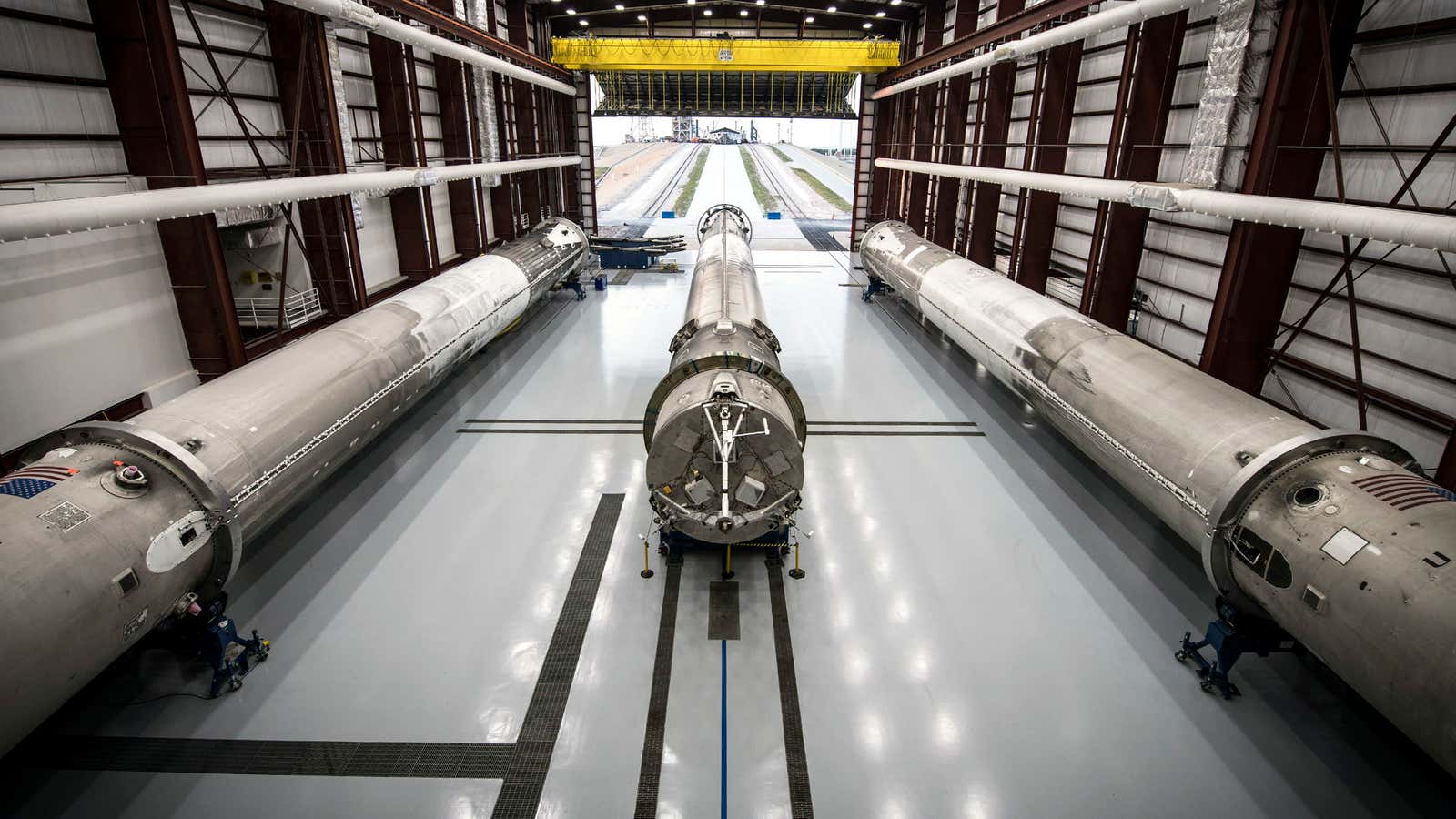SES, the European satellite giant, will be the first company to hire SpaceX to launch a satellite on a previously flown rocket stage, the company said today.
“Having been the first commercial satellite operator to launch with SpaceX back in 2013, we are excited to once again be the first customer to launch on SpaceX’s first ever mission using a flight-proven rocket,” SES chief technology officer Martin Halliwell said in a statement.
“Thanks for the longstanding faith in SpaceX,” the company’s CEO and chief rocket designer Elon Musk tweeted. “We very much look forward to doing this milestone flight with you.”
The flight will take place before the end of 2016, and put SES-10, a communications satellite, into a geo-stationary orbit approximately 37,000 kilometers above Latin America. SpaceX says it will re-use the first stage of the rocket that brought a load of cargo to the International Space Station in April 2016, and then became the first rocket to successfully land on the company’s sea-going drone ship.
The cost of the first flight remains a mystery. SpaceX president Gwynne Shotwell had previously said that reusable rockets could lower the cost of a launch by 30%, to $40 million, while the CEO of SES suggested a 50% price cut that would make the cost of launch closer to $30 million. For comparison, none of SpaceX’s competitors can launch a satellite to geo-stationary orbit for less than $100 million.
Proving that its reusable rockets—flight proven, in SpaceX parlance—can do the job at cost will be another revolution in the launch access market that SpaceX has already disrupted.
SpaceX has been testing its ability to recover the first stage of its rockets for several years now; first by bringing them down for a gentle crash into the ocean to prove they could control them, then attempting to land the rockets on a sea-going landing platform with explosive results at first.
The company landed its first reusable rocket on the ground at Cape Canaveral in December 2015. Since then, it has made three successful landings on its barge and one more at the Cape, for a total of six recovered rockets, and only three failures since the first success. Its most recent landing happened on Aug. 14.
The importance of the first flight-proven rocket will mean deep scrutiny for SpaceX just over a year after its first major launch failure. Its competitors are skeptical that it can reliably refurbish a machine that has already flown many times the speed of sound while experiencing extraordinary stress.
SpaceX executives are confident, however. Last month, the company mounted one of the five flight-proven rockets it has collected so far on a test stand in Texas and fired its engines through a full flight cycle with no apparent problems. Musk and other executives have bragged about the clean condition of the rockets they’ve recovered.
“You pull off the cover and that wire harness is pristine,” Shotwell said last year, according to Space News. “The metal is still shiny. You pull off the thermal protection system that we have near the engine, and that engine is beautiful. It is perfectly clean.”
